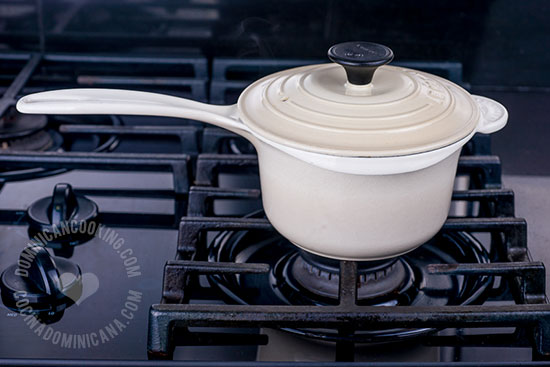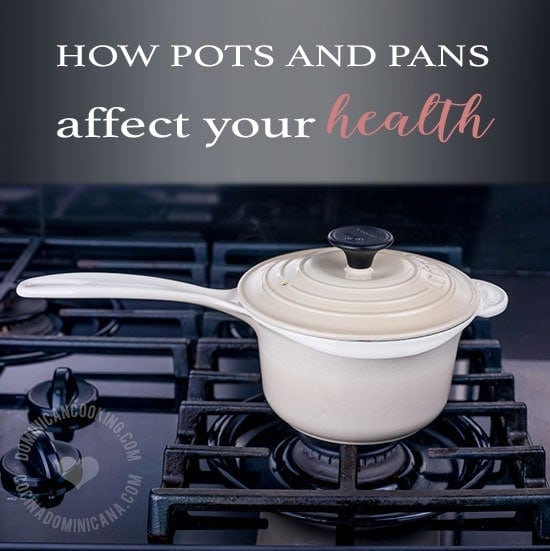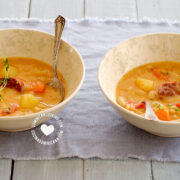How Pots and Pans Affect Food and Health: the materials used to make kitchen pots, pans, and frying pans could affect the nutritional quality of food.

Most of us can't tell a pot from a pan, except when it comes to “concón” - that concoction of crunchy, oily and delicious rice that sticks to the bottom of the pot and that no pan has ever had the honor of creating. What’s more, we only found out about Teflon when talk of “healthy cooking” began.
Although you may not believe it, the materials used to make kitchen pots, pans and frying pans could affect the nutritional quality of food: they can reduce or increase the loss of nutrients during the cooking process. As well as this, some pans intensify the natural aroma of some foods, making our mouths water and leading to hunger pangs.
Let’s look at some commonly used materials, and how they affect food:
Aluminum (Aluminium): pots made of this material are lightweight and effective heat conductors, but make some vegetables smell too strong. This happens with cabbage, broccoli, Brussels sprouts and some others. They also have the dubious virtue of reacting to white vegetables like cauliflower and potatoes, turning them an unappetizing shade of yellow. Had you noticed?
Copper: copper pots heat up in a stable and moderate manner. To make the most of this property, pans made from other materials use a copper coating to increase heat. However, copper itself is a potentially poisonous material. Whenever you cook using copper pots, make sure that they haven’t been damaged through daily use. If you can see orange-colored lines in the traditional metallic color, throw it away, to be on the safe side.
Ceramic/Clay: the best thing about terracotta is that it is porous, meaning that it allows excess steam to escape from the pot, leaving only what is needed for the food to cook in an incredibly attractive way – juicy but firm. Most ceramic pots come coated with a varnish that reduces this porosity. More importantly, some pigments used in the varnish may contain lead, a distinct possibility with very old cookware, lead is a health-threatening element that can react with acidic foods. If you want to buy ceramic or clay pots, make sure you check that its components are safety-certified and wash them by hand.
Stainless steel: pans made of this material are really an alloy of other metals. Their main advantages are their firmness and durability, although they are not such good heat conductors. In addition, some alloys may contain nickel, which some people are allergic to. With prolonged use and excess heat, stainless steel pans can become discolored and foods like pasta or potatoes will darken them. Once you can literally see the bottom of your stainless steel pot, it’s time to throw it away, because this means it’s worn out.

Glass: glass is a neutral material that does not react with foods, and which comes in a range of attractive colors. Two things to bear in mind: don’t use glass pans with metal parts in microwave ovens, because metal blocks the waves and sends out electrical sparks which damage the oven, giving you the fright of your life. The other precaution? Remember that glass is a delicate material. If it falls it breaks, sometimes along with everything inside. If you have a tendency to be clumsy, choose another type of pot, despite the lovely colors.
Iron: pots made of this material have their pros and their cons. Iron is an excellent heat conductor, which also retains heat for a long time; pots are easy to clean and last forever, despite being extremely heavy. It’s also known that iron from the pot is absorbed into the food and until recently, people believed that this even increased the food’s nutritional value. Subsequent studies have shown that the type of iron that gets into the food is not absorbed by the body, and what’s worse, it can be harmful for people who suffer from “hemochromatosis”, a condition in which this build-up of iron can even damage internal organs.
Non-stick coatings: non-stick surfaces are made of plastic (polytetrafluoroethylene, to be precise) with chemical hardeners. As long as the surface of the pan is not scratched or chipped, there is no problem. When this product came on to the market, it was snapped up by dieters because it can be used for fat-free cooking. Remember though that good quality Teflon is very expensive and you must take extra care to avoid scratches, by using wood or plastic implements and washing with gentle sponges that don’t damage the surface. Bear in mind that you should not cook at very high temperatures in non-stick pots.
Another thing to think about when you’re shopping. I leave you to digest it.

Himilce Tejada is a Dominican cookery and lifestyle writer for several magazines and newspapers. This was originally published by Diario Libre Newspaper, translated by Aunt Ilana and fact-checked by Aunt Clara. Reproduced with permission from the author.
Sources:
Food and Drug Administration
American Hemochromatosis Society
University of Nevada
Washington Post
WebMd





